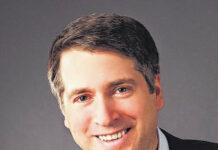The medical residency program at Southeastern Regional Medical Center is about to complete its inaugural year. Newly minted physicians are once again about to descend on the area. The ealth disparities that plague the county create fertile ground for these doctors fresh from medical school anxious to hone their skills.
Southeastern’s Emergency Department is the perfect place for these bright minds. It is a busy ER with high patient volume consistently ranking one of the best in the state.
Emergency departments do not operate in a vacuum. They typically reflect the communities they serve. ERs are the melting pot of the region and a magnet for its various ills.
If the community has high rates of chronic disease, the ER will see sicker patients. High levels of uninsured, the ER will see more uninsured. Low literacy rates result in return visits, less compliance and follow up failures. High violence in the community ends up in the ER with more traumas and more drama. Limited mental health resources create more emergency psychiatric interventions. Overcrowded primary care clinics simply mean everyone else ends up in the ER where the buck stops.
While ERs fight death and disease coming in one door, they fight politicians and bureaucracy at the back door. Bureaucrats can’t fix the societal problems that overwhelm ERs across the nation but paradoxically expect hospitals to perform some magic and make these societal ills disappear in their ERs. They want quick care for complex problems, high volume pushed through shrinking resources and fewer admissions for a very sick population with many social challenges. ERs want this too but there are few solutions and nowhere else to turn. ERs are the last hope for many. Sometimes it is even a sanctuary.
The most common cause of overcrowded ERs with long wait times is high ER utilization, patients waiting on admission and limited resources to meet growing demand. It isn’t simply a failure of processes designed to assemble widgets. People aren’t widgets and the problem is sometimes broader than a hospital can control. It can only manage what arrives from the area it serves.
Society simply has a “go to the ER” mentality. Call a physicians office after hours. Every answering machine says go to the ER. Can’t get an appointment? You will be told to go to the ER. Do an Internet search of your problem. The disclaimer will say go to the ER. The last instruction for any surgery patient is when in doubt, go to the ER. One writer has said only administrators, lobbyists and progressive academics with starry-eye fantasies think ER visits will decrease in this environment.
People are living longer, health problems are more complex, litigation looms, primary care is limited and insurance is expensive even when mandated by government. ER utilization is a national crisis and admission rates that fill up hospital beds vary widely. Name a disparity that results in high admission rates and high patient volume and Robeson has it.
Studies show that high ER volumes, high rates of acuity, poverty, uninsured rates and demographic disparity result in these higher admission rates. Yet somehow our medical xenter manages the deluge. The local ER is among the busiest in the state and a glimmer of hope amid national health-care chaos while now becoming an academic center.
Our EMS system actually handles twice the daily calls for service with half the ambulances as a larger city. But they pull it off. Our medical center pulls off miracles amid chaos constantly doing more with less than most.
It is the perfect place to train and serve. The people who work at the medical center attempt to meet needs despite many barriers. Many work there not because they see it as a job, but as a mission. They work there not because it’s easy, but because it’s hard.
The hope is that these new doctors see the value as well.
Word Count: 652 Phillip Step






